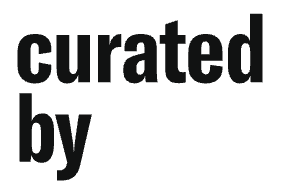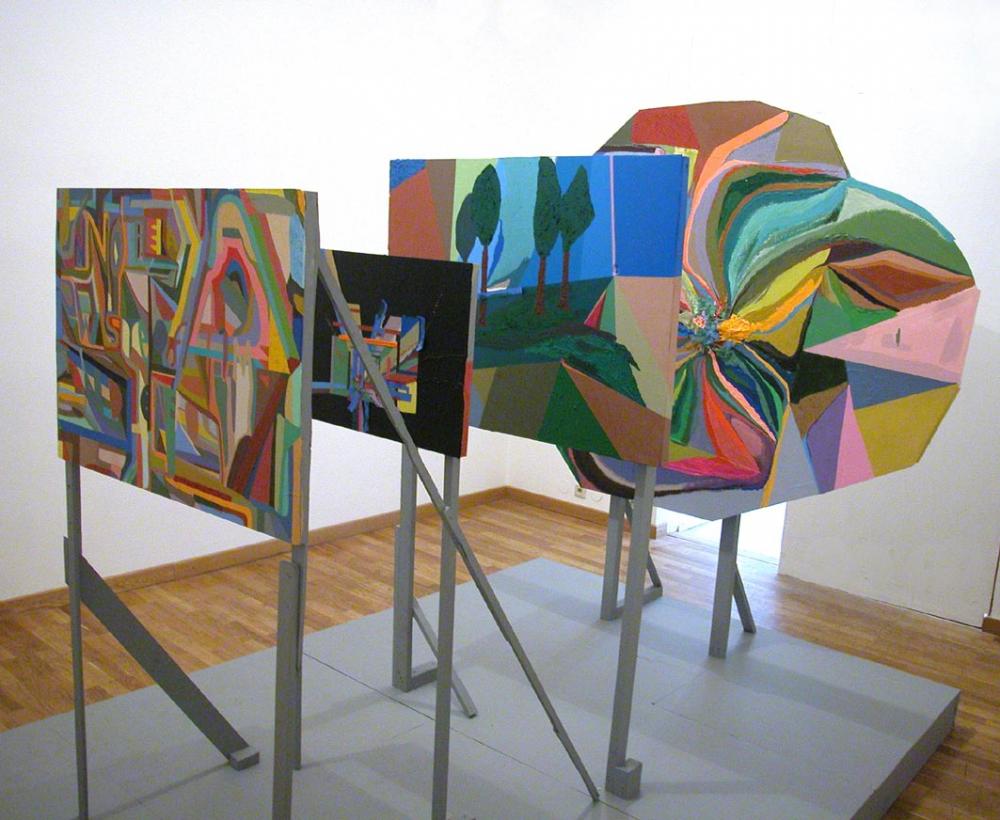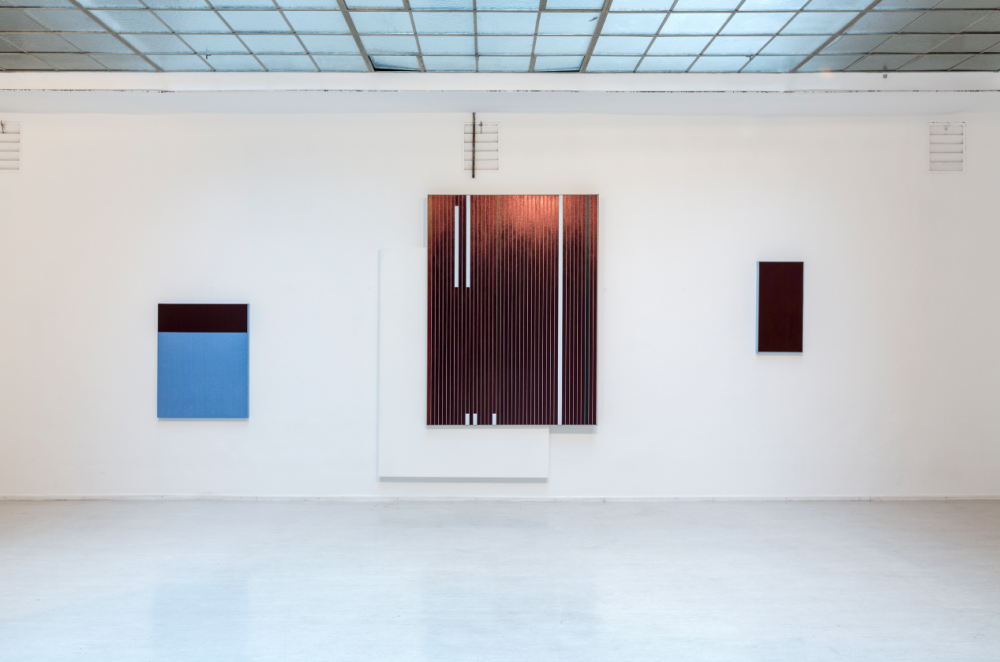Lombardi—Kargl curated by Martin Prinzhorn
„Additive Abstraktion“
11.10 - 14.11.2013
Press release 

Lombardi—Kargl, Schleifmühlgasse 5, 1040 Vienna
BOX, Schleifmühlgasse 5, 1040 Vienna
PERMANENT, Schleifmühlgasse 17, 1040 Vienna
www.lombardi-kargl.com 1998-2023
www.georgkargl.com
BOX, Schleifmühlgasse 5, 1040 Vienna
PERMANENT, Schleifmühlgasse 17, 1040 Vienna
www.lombardi-kargl.com 1998-2023
www.georgkargl.com
Curator(s):
Martin Prinzhorn
More 

Martin Prinzhorn is an author, linguist, and curator. He has written and published texts and articles in the fields of fine arts and architecture about Martin Kippenberger, Albert Oehlen, Mike Kelley, Jutta Koether, Mary Heilmann, Jabornegg & Pálffy, SANAA architects (Kazuyo Sejima + Ryue Nishizawa) and others. His work as a curator and lecturer has led him around the globe with exhibitions in Tokyo, Bolzano, Vienna (Secession), Innsbruck (Kunstraum Innsbruck), etc.; teaching assignments i.a. at the Art Center College of Design in Pasadena, CA, Merz Akademie Stuttgart, Academy of Fine Arts Vienna. Martin Prinzhorn works in the Department of Linguistics at the University of Vienna.
Artist(s):
-
Will Fowler MoreThe works of Will Fowler (born in Winston-Salem, NC, 1969) have their origin in the deconstruction of the two- dimensional visual surface. In earlier works, actual sculptures were brought out of the surface into the space or the can- vas frame itself was moved as an object into the space. This three-dimensionality is also continued in the new works, but only using means that are directly applied to the canvas. Here, there are overlappings that through form and texture generate an object-character in the image. The forms are borrowed from a grammar of modernism and minimalism, and yet their multilayered combination generates sites of insecurity of vision; the density of impressions allows for no endpoint.
-
Manuel Knapp MoreManuel Knapp (born in Wolfsberg in Carinthia, 1978) belongs to a generation of artists that cannot be reduced to specific media: rather, he incorporates in his painterly practi- ce considerations from other realms in a self-evident fashion. The use of sound and installation makes his painting a buil- ding block in an expanded field alongside its autonomous status. In the images shown in the exhibition, at issue are film formats and the medium of film in itself: What at first looks like a reduced, abstract black and white composition becomes upon longer inspection the visual field of a technical medium, the surface of the paintings transports the vulnerability and fragility of the material. Painting and its traditions of percep- tion are used to negotiate the specifications and the materi- ality of an entirely different medium.
-
Herbert Hinteregger MoreOver the years, Herbert Hinteregger (1970, lives and works in Kirchberg/AT) has consistently developed an artistic vocabulary that focuses on the use of ink from ballpoint pens as his painterly material. Beside almost monochromatic pictures for which he first squeezed out Bic pens to then apply the ink with paintbrushes or sponges to the canvas, usually geometric pen drawings emerged, but he also created numerous spatial works where the main element consists in the transparent sheaths of the empty pens. The exclusive use of this material, a cheap, recyclable disposable object, in Hinteregger’s overall work represents a reduction and a focus on minimal basic materials. By way of this limitation, he consciously relies on fundamental questions of painting linked to the material he uses. Visual space and depth, the reduction of the formal language, and at the same time constructive material positions, the varying density of the layers of ink and the question of the ideal standpoint influence Hinteregger’s thought. His spatial installations are also shaped by his engagement with these questions. In the work all over, the walls, ceiling, and floor are covered with countless empty ballpoint pens, and in so doing all fixed points and centers are dissolved. Here too the image first emerges with the movement of the beholder, who perceives a space-filling thicket of ballpoint pens. Information itself has here disappeared, content appears as illegible codes that integrate chance and their decoding in the infinity of possibilities of how to read to these transparent and permeable bearers of information. Recently his works were shown in solo exhibitions at the Kunstverein Heilbronn, Heilbronn, Galerie im Taxispalais, Innsbruck (2017), RLB Atelier, Lienz (2016), Georg Kargl Fine Arts, Vienna (2010, 2004, 2001, 1999), Georg Kargl Permanent, Vienna (2006), Neue Galerie am Landesmuseum Joanneum, Graz, MUMOK, Vienna (2005), Kunstraum Innsbruck (2004), and Kunsthaus Muerz, Mürzzuschlag (2002).
-
Chris Johanson MoreRooted in the community of San Francisco’s Mission District, Chris Johanson, born in 1968, engages with issues of urban realism. His works oscillate between the realms of graffiti, comics, and street art. His drawings and paintings on wood panels show revealed increasingly eccentric formats, until in 1995 they began to leave the walls and occupy the surrounding space, which developed into a kind of expansive installationism with recycled materials and found pieces. Johanson’s reduced visual language, abstract surfaces, and simplified visual effects prove consciously oblivious to the great expectations and ambitions of more acknowledged forms of contemporary art. His works combine political and social commentary, anti-war slogans, and consumer critique as a narrative commentary on the American city. Johanson’s work attests to the fleeting activities and grotesque phenomena of a society occupied with self-discovery using gripping narratives full of dark humor. In 2008 Chris Johanson showed his works at Casa Encendida, Madrid, Chelsea Art Museum, New York, and Deitch Projects, New York. He also showed his work at Museum Boymans van Beuningen, Rotterdam (2002), the Whitney Biennial (2002), CCA Wattis Institute for Contemporary Arts, San Francisco (2005), New Museum of Contemporary Art, New York (2005), and Deste Foundation, Athens (2006 and 2007).



